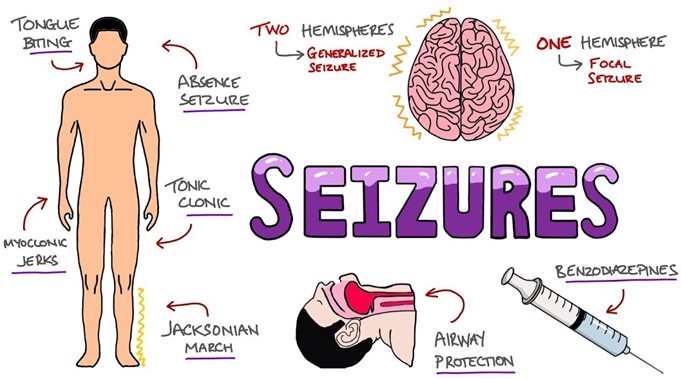A nurse is collecting data from a client who is experiencing alcohol withdrawal. Which of the following is an expected finding?
Stuporous level of consciousness
Seizure activity
Pathological change on CT scan
Bradycardia
The Correct Answer is B
When a client is experiencing alcohol withdrawal, seizures are a common finding. Benzodiazepines are the preferred medications for alcohol withdrawal, and they are used to prevent seizures and treat symptoms of anxiety, agitation, and autonomic hyperactivity. Stuporous level of consciousness (Choice A), pathological changes on a CT scan (Choice C), and bradycardia (Choice D) are unlikely findings in a client experiencing alcohol withdrawal. Stuporous level of consciousness is more indicative of acute brain dysfunction or coma. CT scan findings may indicate structural brain injury, such as a brain tumor or stroke. Bradycardia is not a common finding in alcohol withdrawal but may occur in severe cases. However, tachycardia is a more common finding.

Nursing Test Bank
Naxlex Comprehensive Predictor Exams
Related Questions
Correct Answer is B
Explanation
The nurse should recommend establishing a reward system for positive behavior when contributing to the plan of care for a child with an autism spectrum disorder. Reward systems can be particularly effective for children with autism spectrum disorder, as they respond well to structured routines and consistency.
Choice A, assuring that the child has a large variety of caregivers, is not recommended, as children with autism spectrum disorder can be particularly sensitive to changes in routine and caregivers. Providing a flexible schedule to adjust to the child's interests,
choice C may be appropriate in some cases, but a structured routine can be even more beneficial. Allowing for imaginative play with peers without supervision, choice D, may not be safe or effective in all situations. It is important for the nurse to work with the child, their family, and other healthcare professionals to develop an individualized plan of care that meets the child's specific needs and goals.
Correct Answer is ["A","B","D"]
Explanation
A nurse discussing comorbidities associated with eating disorders with a newly licensed nurse should include depression, anxiety, and obsessive-compulsive disorder (OCD) in the discussion. Clients who have eating disorders often have comorbid psychiatric conditions.

Depression and anxiety are two common conditions among clients with eating disorders. OCD is another condition that is often associated with eating disorders. Clients with OCD may have obsessive thoughts about food intake, weight, and body image. These clients may also engage in compulsive behaviors related to eating, such as calorie counting or food restriction. Options C and E are incorrect because breathing-related sleep disorders and schizophrenia are not typically associated with eating disorders.
Whether you are a student looking to ace your exams or a practicing nurse seeking to enhance your expertise , our nursing education contents will empower you with the confidence and competence to make a difference in the lives of patients and become a respected leader in the healthcare field.
Visit Naxlex, invest in your future and unlock endless possibilities with our unparalleled nursing education contents today
Report Wrong Answer on the Current Question
Do you disagree with the answer? If yes, what is your expected answer? Explain.
Kindly be descriptive with the issue you are facing.
